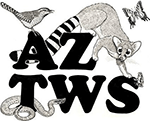
- This event has passed.
Thesis Defense: Sixty-Three Year Changes of Range Trend with Response to Livestock Exclusion in the Upper Sonoran Desert of South-Central Arizona
April 11, 2018 @ 1:00 pm - 3:00 pm
FreeThesis Defense
Presenter: Kellie Dunn
April 11th, 1:00 PM
Arizona State University,
Polytechnic Campus; Room: AGBC 118
The introduction of livestock on the vast majority of public lands may be used to simulate the conditions provided by herbivorous grazers in the past, however little data has been collected on the effects of livestock grazing in upper Sonoran desert habitats. This is of particular interest because species that are characteristic of upland Sonoran desert plant communities did not evolve over time under heavy grazing regimes. Four historic Parker 3-Step clusters in south-central Arizona were sampled in three cohorts between 1953 and 2016 to interpret changes in rangeland health using soil coverage data, species richness and frequency, and long-term photo point comparisons. Livestock were excluded from the study site in the latter 30 years of this study. Over the 63 year period, there was a 67% increase in perennial basal hits, and a 56% increase in rock, while decreases were seen in litter (-58%) and bare soil (-9%). The average percent of cover increased by 63% across the allotment and available species richness data indicated an increase of 16 unique species after grazing was ceased. The use of moderate grazing as a management practice on rangelands will assist in maintaining forage stands, but only when used at proper rates. It is therefore increasingly important for rangeland managers to understand the effects of livestock grazing in arid environments due to the lack of long-term studies conducted in such life zones.
Committee: Eddie Alford, Stanley Cunningham, Jean Stutz
